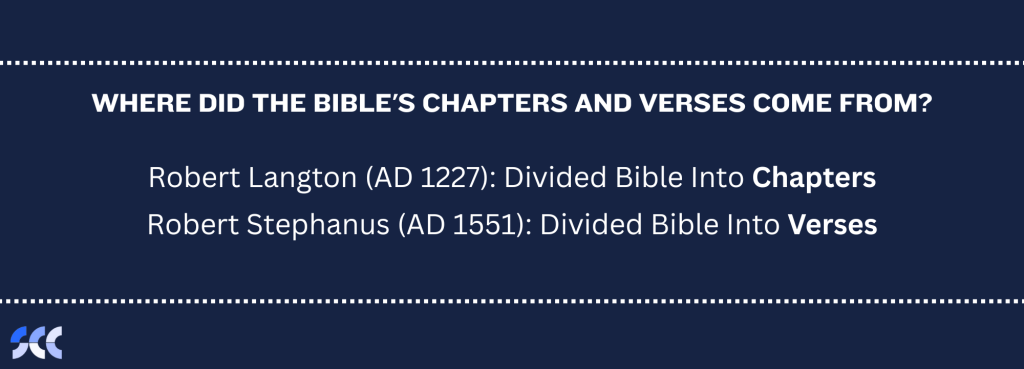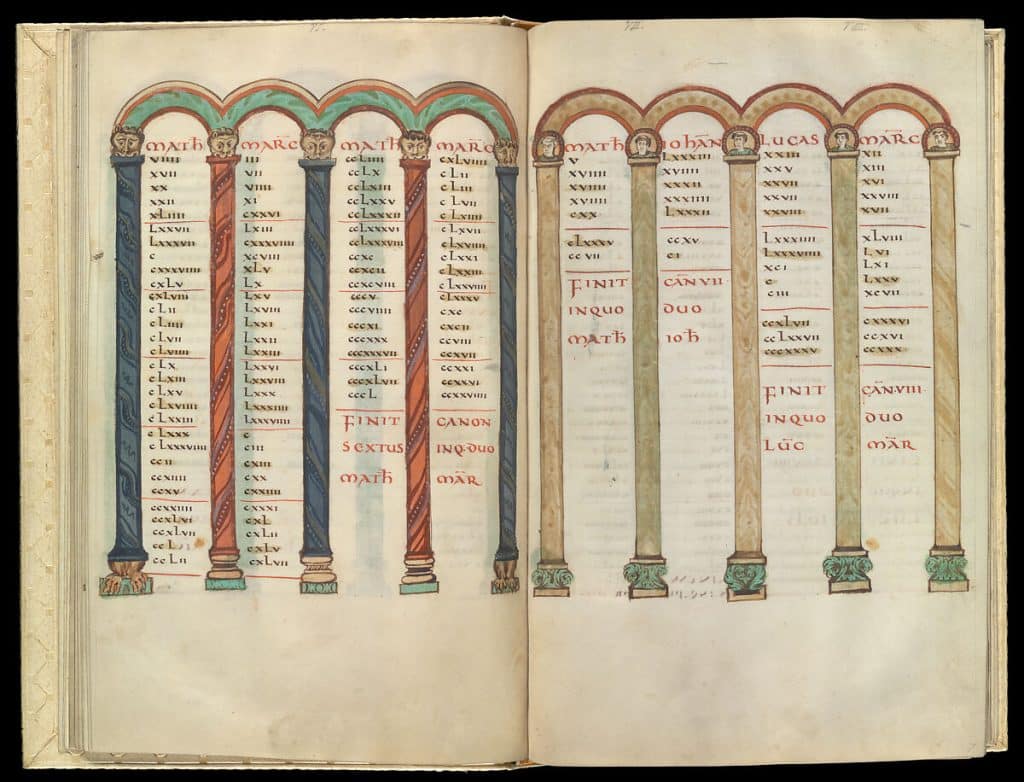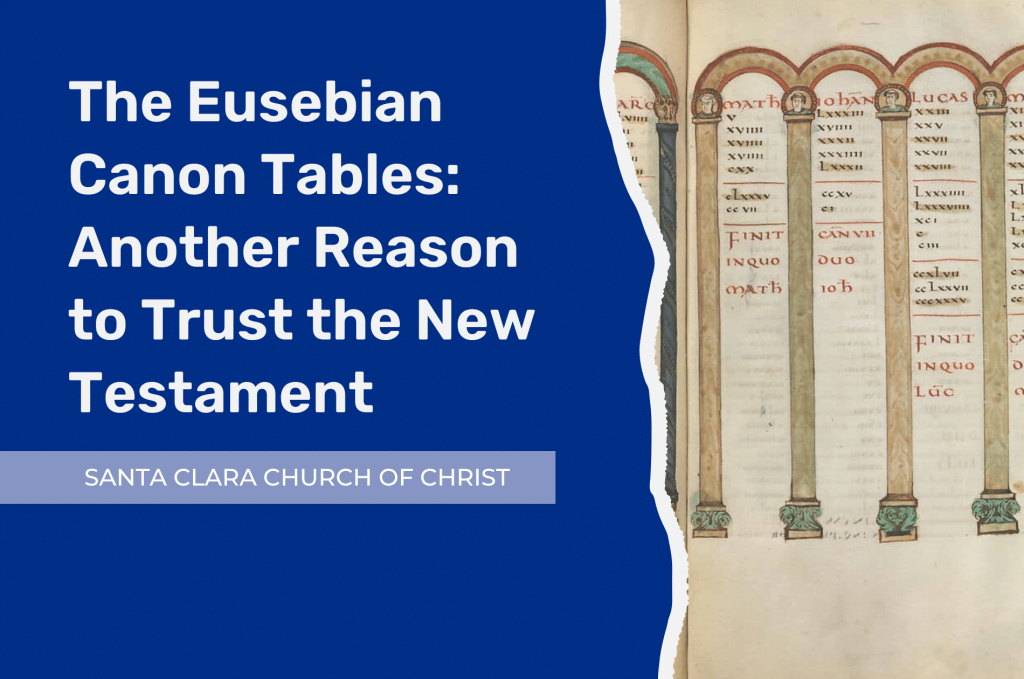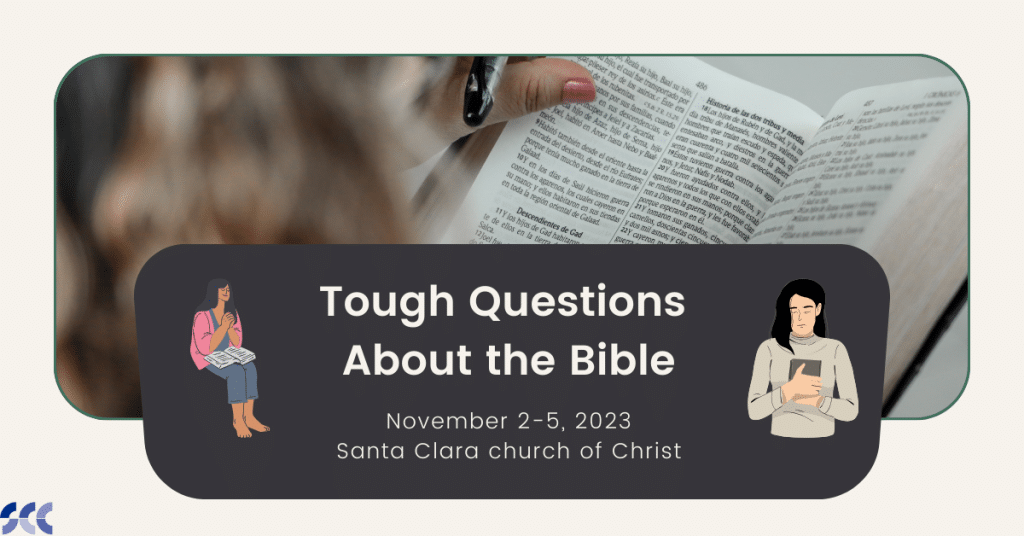The Eusebian Canons were devised by the famous church historian, Eusebius of Caesarea, in the early 4th century, approximately three centuries after the birth of Christianity.
Eusebius formulated a way in which serious students of the life of Christ could access parallel passages in the four Gospels of Matthew, Mark, Luke, and John.
Who Created Bible Chapters and Verses?
At this time, the chapter and verse divisions we take for granted did not exist. Stephen Langton is generally credited for the chapter divisions of the Bible. Langton served as Archbishop of Canterbury and died in 1228. He is also largely responsible for the Magna Carta.

Credit for the verse divisions of the Bible goes to a French printer by the name of Robert Estienne (or Robertus Stephanus in Latin) in 1551. Prior to verse divisions, chapters were divided into alphabetic sections (a, b, c, d, etc.).
How are the Eusebian Canons Different?
So Eusebius devised a way for cross-referencing parallel episodes recorded in the four Gospel accounts in the absence of chapters and verses. There were ten canon tables categorizing parallel passages, and then section markers were put in the margins of the text for handy access.
The breakdown is as follows:
- Table 1 – episodes in all four Gospels
- Tables 2-9 – episodes common to two or three
- Table 10 – episodes unique to just one Gospel

One sees the Eusebian system from the fourth century in various Greek manuscripts of the Gospels, including the famous Codex Sinaiticus. Then throughout the Middle Ages, the tables are generally found in highly ornate form as part of the preface of Gospel books of the Latin Vulgate and other ancient versions, and then the corresponding section references are found in the margins of each page of the text.
I have a printed Latin Bible from Lyon, France, dated to 1547, and even at that late date (relatively speaking), it still has both the Eusebian tables and the section markers.
What Can We Learn From the Canon Tables?
There are many insights such a system teaches us. First, early church scholars wrestled with various aspects of the harmony of the four Gospels, and this was an invaluable tool that facilitated comparison of the Gospel texts.
Second, the mere presence of the Eusebian Tables in so many medieval manuscripts helps to debunk the notion that the biblical text was fluid and constantly fluctuating during this time. Every paragraph of Matthew, Mark, Luke, and John were assigned a Eusebian section number, and these sections were consistent from the early 300s to the mid-1500s, after the printed text replaced hand-written manuscripts and when other tools finally supplanted the one devised by Eusebius.
Bottom line – the text of the Gospels did not change over the centuries! What was handed down from the beginning is the same account of the life of Christ that we have today.



